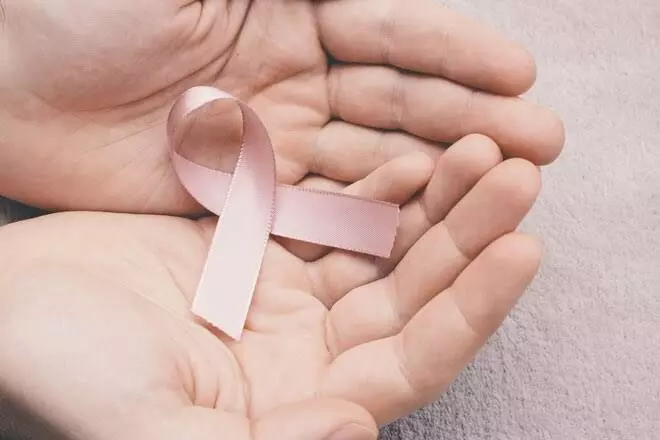Rise in cancer cases alarms millennials; breast cancer took most toll
While cancer tends to be more common in older people, evidence suggests that cases among persons younger than 50 years have been rising in many parts of the world since the 1990s.
By Sulogna Mehta
New Delhi: There has been a 79 per cent increase in new cases of cancer among the under-50 years of age group globally in the last 30 years, according to a study published in the journal BMJ Oncology.
The research found that the fastest rise was in windpipe and prostate cancers while the heaviest death toll was seen for cancers of the breast, windpipe, lung, bowel, and stomach. The team was led by researchers from the University of Edinburgh in Scotland. They estimated that the global number of new early-onset cancer cases and associated deaths will increase by a further 31 per cent and 21 per cent, respectively, in 2030, with those in their 40s more at risk than others.
The study
The researchers drew on data from the Global Burden of Disease 2019 study on 29 cancers in 204 countries and regions. They looked at the incidence, deaths, health consequences (disability-adjusted life years or DALYs) and contributory risk factors for all those aged 14 to 49 years to estimate annual percentage change between 1990 and 2019.
Cancer risk rises among younger age groups
While cancer tends to be more common in older people, evidence suggests that cases among persons younger than 50 years have been rising in many parts of the world since the 1990s.
In 2019, new cancer diagnoses among the under 50s totalled 1.82 million, an increase of 79 per cent on the 1990 figure, the researchers said. Overall, breast cancer accounted for the largest number of these cases and associated deaths at 13.7 and 3.5 per one lakh of the global population, respectively.
However, new cases of early-onset windpipe and prostate cancers rose the fastest between 1990 and 2019, with estimated annual percentage changes of 2.28 per cent and 2.23 per cent, respectively, according to the study.
After cancer of the breast, cancers exacting the highest death toll and subsequent poor health were those of the windpipe, lung, stomach, and bowel, with the steepest increases in deaths among people with kidney or ovarian cancer.
At the other end of the spectrum, early onset liver cancer fell by an estimated 2.88 per cent every year, the researchers found. More than 1 million (1.06) under the age of 50 years died of cancer in 2019, an increase of nearly 28 per cent on the 1990 figure, they said.
North America is among the most affected. The highest rates of early onset cancers in 2019 were in North America, Australasia, and Western Europe. However, low to middle-income countries were also affected, with the highest death rates among the under-50s age groups in Oceania, Eastern Europe, and Central Asia, according to the study.
Bad diet and alcohol, tobacco consumption are culprits
The researchers noted that genetic factors are likely to have a role. However, diets high in red meat and salt, and low in fruit and milk, alcohol consumption and tobacco use are the main risk factors underlying the most common cancers among the under 50s, with physical inactivity, excess weight, and high blood sugar contributory factors, the data indicate. It is still not clear to what extent screening and early life exposure to environmental factors may be influencing the observed trends, they added.
As per the Indian Council of Medical Research-National Cancer Registry Programme, (ICMR-NCRP), cancer cases are likely to increase from 14.6 lakh in 2022 to 15.7 lakh in 2025 in India. ICMR also published a research paper on this.
Over the last decade, cancer cases have risen from around 10 lakhs in 2012 to 14.6 lakhs in 2022. The government had earlier said that under its Ayushman Bharat Health and Wellness Centre Scheme, it is undertaking a population-based initiative for prevention, control and screening for three common cancers — oral, breast and cervical cancer.
Causes for cancer spike in India
Speaking about the main reasons for the increasing cancer burden, Dr K Sreekanth, senior surgical oncologist at Yashoda Hospitals said, “Among women, breast cancer is increasing at a faster rate due to lifestyle changes, late childbearing, no breastfeeding, stress and disrupted sleep pattern, smoking, alcohol, unhealthy foods, obesity etc. All these alter the hormonal milieu in the body, which adversely affects the breast and ovaries. In fact, women in their 30s and 40s are also getting cancers and this trend is expected to rise further. On the other hand, due to awareness about safer sexual practices and better maintenance of genital hygiene, incidences of cervical cancer seem to have been reported less than breast cancer. Abroad, there are strict screening protocols, whereas it is not mandatory in India. As a result, cancers are often detected late.”
“Among men, lung cancer is increasing due to smoking, while oral cancer also shows a spike, especially in North India, due to excessive chewing of tobacco products like gutkha apart from smoking. With an increase in life expectancy, more cases of prostate cancer are reported, mainly in the elderly population. Stomach or gastric cancer is also increasing among men due to consumption of alcohol and a faulty diet, especially binging on preserved, smoked and spicy junk food,” added Dr Sreekanth.
Cancer cases that have been on the rise for the last couple of decades in India:
Lung Cancer
Oral Cancer
Gastric/Stomach Cancer
Prostate Cancer
Breast Cancer (among women)
Cervical Cancer (among women)